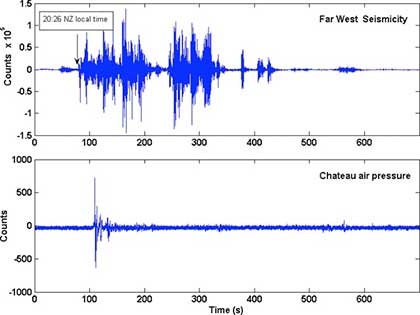Volcanoes: More Warning Signs
Here are three ways to use remote-sensing instruments to “look” inside a volcano without actually going there.
Satellite images. Infrared cameras in orbit around the Earth can map the heat energy of a volcano. Scientists look for a sudden rise, as happened before the explosion of Pacaya volcano in Guatemala on May 20, 1998. Satellites can also give scientists a bird’s-eye view of the changing patterns of volcanic clouds—steam and ash—in an active volcano.
|
The satellite image on the left shows Mount Saint Helens in 1975, before the massive 1980 eruption that destroyed the top of the volcano. In an image from 2005, right, the scarred top of the mountain has yet to be rebuilt. |
Gravity and magnetic fields. As rocks and magma shift, so does the gravity field and magnetic field beneath a volcano. As for the gravity field, dense rocks have a greater gravitational pull than less dense rocks. An instrument called a gravimeter can map the differences in gravitational pull remotely.
A magnetometer is an instrument that remotely senses magnetic fields in the ground. It relies on the fact that the iron in Earth’s rocks is attracted by the north and south magnetic poles and tends to line up accordingly. The movement of magma disrupts this orderly pattern.
|
Changes in sounds coming from the volcano can alert scientists to coming eruptions. |
Sound waves—the “songs” of bubbling magma. Seismic waves move underground through varying densities of rock and magma. But sound waves can move through air—a relatively uniform medium that allows for a clearer record of the waves. Microphones on volcanoes reveal interesting “songs”—some of them infrasonic (below human hearing). The bubbling gases cause the magma to vibrate like a drum (sound waves are vibrations) and whine, hiss, whoosh, and chug like a train. The warning signs are an increase in infrasonic tunes, wave strength, and steady “singing” without breaks.
Taken together, all these warning signs tell volcanologists which volcanoes to watch most closely.
This content has been re-published with permission from SEED. Copyright © 2025 Schlumberger Excellence in Education Development (SEED), Inc.



